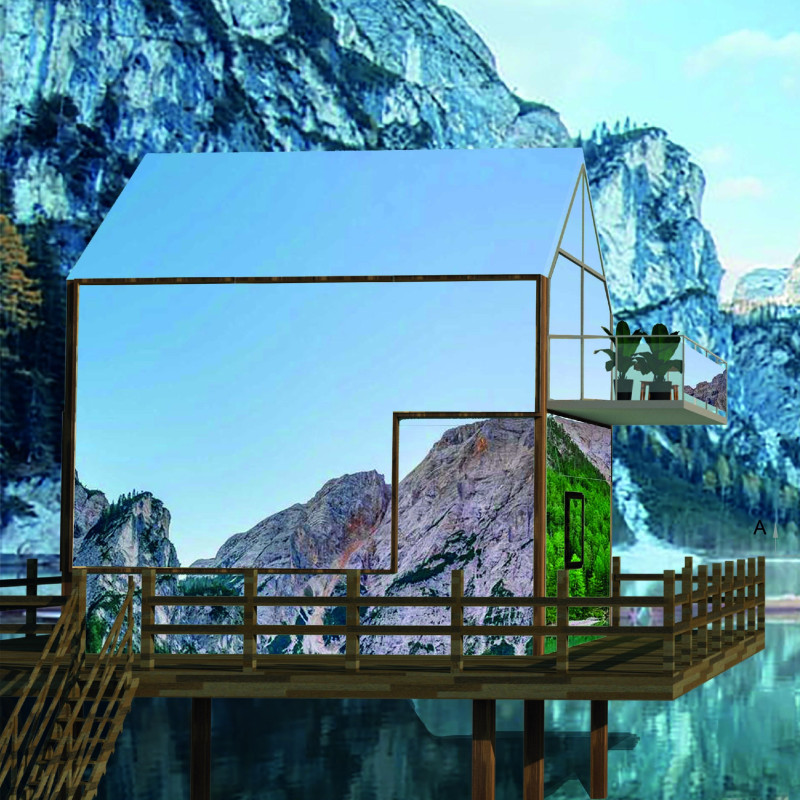5 key facts about this project
"Mirror The World" is located at Lake Braies in South Tyrol, Italy. The design features a micro house fully covered in mirrors, allowing it to blend with its surroundings. The concept prioritizes ecological sustainability and adaptability, enabling the structure to change with the seasons and engage actively with the landscape.
Architectural Concept
The focus of the design is on adaptability within a limited space. The micro house includes various spaces that can serve different functions, making it easy for users to adjust the interior according to their needs. This creates a multifunctional living area that remains well-organized while maximizing usefulness.
Materiality and Sustainability
Sustainability is an important aspect of the design. The interior layout uses natural and recycled materials for a balance of comfort and modern appearance. The roof has mirror glass slabs that contain photovoltaic cells. These cells not only allow natural light into the home but also promote energy efficiency. The panels are treated with amorphous silicon gel, which helps turn them into semiconductors, optimizing energy production without losing brightness inside.
Structural Innovations
Spy Mirror Glass forms the shell of the MicroHome. This tempered material offers a combination of transparency and reflective qualities. It allows people to see outside while providing a mirrored effect from the other side, depending on the light. This feature ensures a sense of privacy while maintaining openness in the living space.
Interior Functionality
The design makes use of retractable furniture to improve space efficiency. Desks for work are cleverly hidden under the living room counters and can be pulled out when needed. Additionally, a retractable balcony extends out toward the lake on sunny days, providing an inviting spot for relaxation or work. The use of a Spider Glass anchoring system enhances stability by allowing for wider glass surfaces, ensuring durability against the elements.
The careful attention to detail in the design, from the adjustable furniture to the reflective outer layer, fosters a relationship between the building and its natural surroundings, showcasing the beauty of the landscape while offering a flexible living experience.


















































